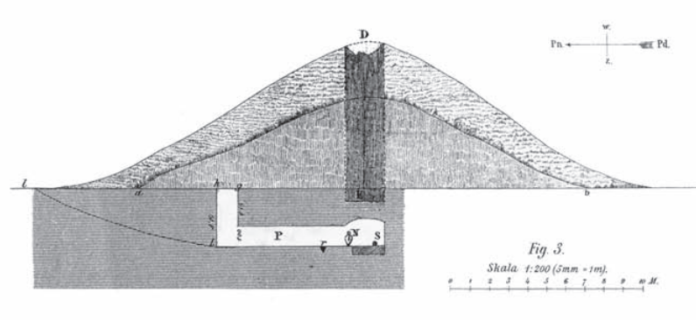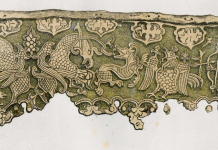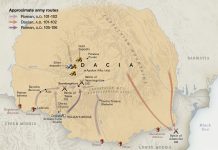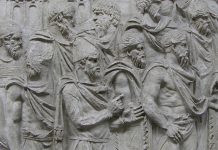In 1884, Polish archaeologist Godfryd Ossowski explored the great kurgan near the present-day city of Zvenigorodka, some 150km to the south of Kyiv. But the trench cut through the middle of the barrow revealed only horses’ bones and amphora sherds. “But in 1887 the side of the trench fell in, exposing the top of a complete amphora, a bronze vessel, a mirror, and some gold plates. The peasant who found all this then caught sight of a human skull, was frightened, gave up digging, and handed over his finds to the lord of the manor, Mr Grincewicz. The latter gave them to Mr Ossowski for the Cracow Academy. Then happily a horse fell into the hole and died there, preventing any further attempts on the part of unauthorised plunderers. Ossowski proceeded to investigate the tomb systematically, and it proved one of the most perfect Scythic tombs known. A passage led down to a depth of 3.1 m. and then continued horizontally for 6 m., being 1.50 m. broad and rather more than a meter high. It led into a rectangular chamber 3.10m. long and 2.65 m. broad, high enough to stand up in. The chamber was divided into two unequal parts by a step 40 cm. high.” (E. Minns) NEXT >
© Newspaper Theme by tagDiv










